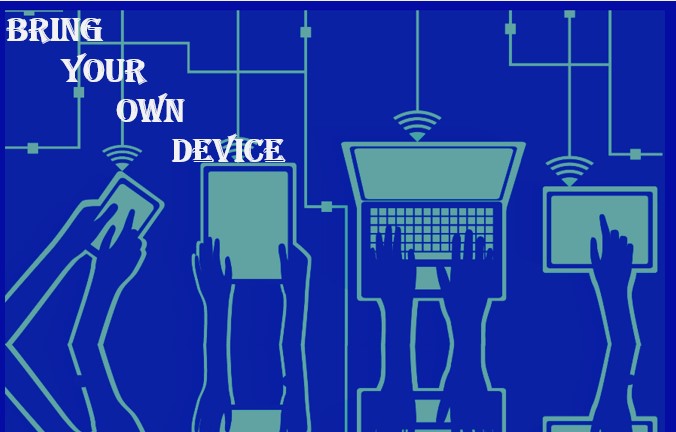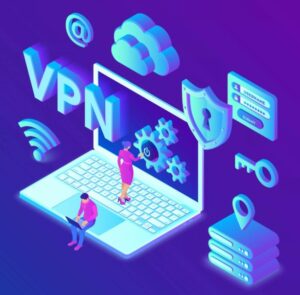Pros, Cons, and Security Considerations About BYOD
January 14, 2025

In today’s workplace, employees expect flexibility in their work environments, and one of the most prominent trends that has emerged is Bring Your Own Device (BYOD). This policy allows employees to use their personal devices—smartphones, tablets, laptops, or even wearables—for work purposes. While this can be a win-win for both companies and employees, it comes with its own set of challenges, especially when it comes to security, data access, and overall company policies.
Should Companies Allow or Block BYOD?
The answer varies by company and industry, but the trend is moving toward allowing BYOD in many sectors. According to a 2023 survey, more than 50% of businesses have some form of BYOD policy, ranging from highly permissive to very restrictive. Companies that embrace BYOD often do so to boost employee satisfaction and productivity, while also potentially cutting costs by reducing the need to provide devices for employees.
However, many businesses—especially in highly regulated industries like finance, healthcare, or government—choose to block or restrict BYOD for security and compliance reasons. These companies cannot afford the risks associated with allowing personal devices to access sensitive information. As a result, they may require employees to use company-provided devices, which can be more tightly controlled and managed.
The Advantages of BYOD
Cost Savings: One of the most immediate benefits of a BYOD policy is the cost savings for companies. Instead of investing in expensive hardware and maintaining a fleet of devices, businesses can offload the responsibility to their employees. In fact, companies can save on procurement, maintenance, and even repair costs.
Employee Satisfaction: Allowing employees to use their own devices offers them the freedom to work on tools they are already familiar with. For many employees, personal devices are preferred due to their speed, usability, and customization options. This can lead to increased job satisfaction and productivity, as employees feel more comfortable and empowered using their preferred technology.
Flexibility and Mobility: BYOD can improve flexibility in the workplace, as employees are able to work from anywhere using devices they already own. This becomes particularly important in remote or hybrid work environments, where access to work systems must be seamless and reliable, no matter where the employee is located.
Up-to-date Technology: Personal devices tend to be updated more frequently than company-issued ones, especially in industries where the latest technology offers a competitive edge. Employees are more likely to have the most current device models, which can enhance productivity and performance in the workplace.

The Disadvantages of BYOD
Security Risks: The biggest challenge with BYOD is ensuring that personal devices are secure enough to access corporate resources. Employees may not take the same level of security precautions with their personal devices as they would with company-issued ones, leaving sensitive business data exposed to cyber threats like malware, phishing attacks, or data breaches.
Data Loss and Theft: Since employees are carrying their devices with them outside the office, there is a higher risk of data loss, theft, or exposure. If an employee’s device is lost or stolen, there’s a chance that sensitive company information could be compromised, especially if proper encryption or security protocols are not in place.
Compliance Issues: Companies in regulated industries must ensure that their BYOD policies comply with laws such as GDPR, HIPAA, or other data protection regulations. Personal devices may not meet the stringent compliance requirements that company-issued devices typically adhere to, which could expose the business to legal liabilities.
Managing Multiple Devices: Supporting a wide range of devices with different operating systems, software versions, and configurations can create a nightmare for IT departments. Ensuring compatibility, managing updates, and troubleshooting issues across a diverse set of personal devices can be resource intensive.

What Access to Network Resources Should Personal Devices Have?
If your company decides to allow BYOD, you must decide what kind of network access personal devices should have. To mitigate the risks while ensuring productivity, a few common approaches are:
- Virtual Private Network (VPN): A VPN allows employees to securely access the company’s network from remote locations. This ensures that any data being transmitted from a personal device is encrypted, protecting it from interception.
- Mobile Device Management (MDM): MDM software can be used to control and manage the devices accessing your network. With MDM, businesses can enforce security policies such as password requirements, remote wipe capabilities, and app whitelisting. This ensures that even if an employee’s device is compromised, the company can respond quickly to mitigate any potential harm.
- Access Control: Companies can restrict access to certain network resources based on the device being used. For example, personal devices may only be allowed to access email and collaboration tools, but not sensitive financial systems or proprietary software. This creates a “tiered” approach to access, allowing businesses to protect critical resources while still offering flexibility to employees.
- Data Segmentation: Rather than allowing full access to a personal device, businesses can use sandboxing or containerization to separate work-related data from personal data. This ensures that corporate data is isolated and more secure, even if the device is compromised.
- Two-Factor Authentication (2FA): Adding an extra layer of security through 2FA is essential for ensuring that only authorized users can access corporate resources. This is especially important when personal devices are being used, as it adds an additional barrier against unauthorized access.
BYOD policies can offer significant benefits to businesses, from cost savings to increased employee satisfaction. However, they also come with risks, particularly related to security and compliance. Companies must weigh the advantages against the potential drawbacks and implement robust security measures to safeguard their network and sensitive data.
For those who decide to embrace BYOD, establishing clear guidelines, implementing the right technologies (like MDM and VPNs), and regularly educating employees on best practices for device security are crucial steps. By striking the right balance between flexibility and security, businesses can successfully integrate BYOD into their workflows and empower employees to work more efficiently, no matter where they are.
Have Any Question?
Call or email Cocha. We can help with your cybersecurity needs!
- (281) 607-0616
- info@cochatechnology.com




